12 Most Polluted Cities in the World
-
Pete Ortiz
- Last updated:
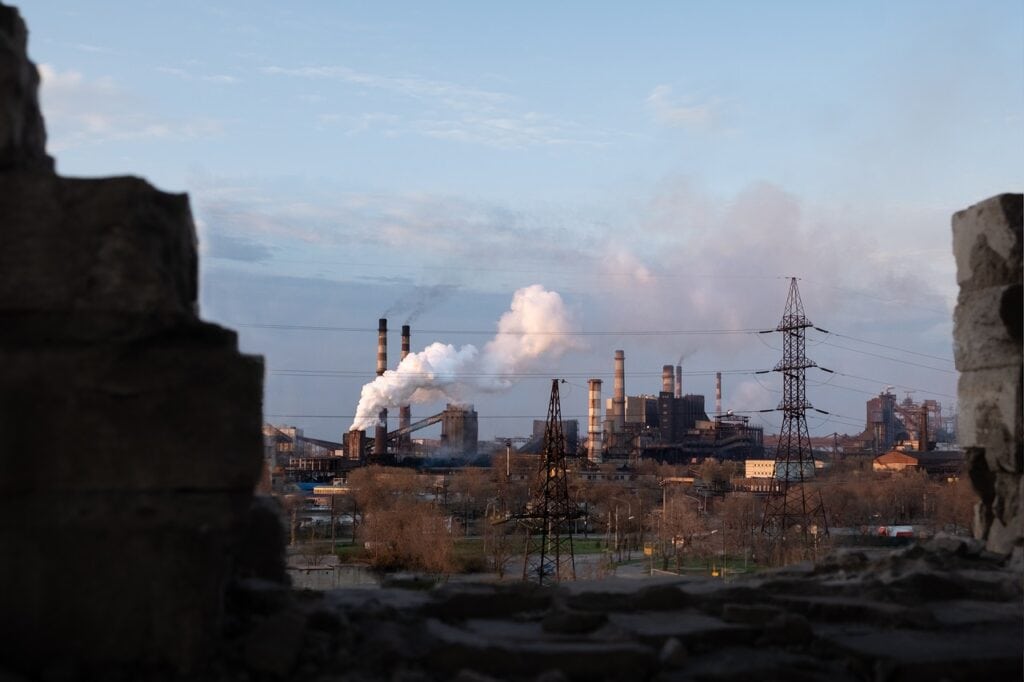
Air pollution is one of the biggest challenges of our time. And while some of the toxic fumes are generated by volcanoes and wildfires, most of the fumes were created by humans. We’re talking about factories, vehicles, and planes. The bad news is—even though world governments are doing their best to switch to green energy, humanity still has a long way to go before we get there.
Right now, Bangladesh is the top country with the highest levels of contamination in the air. But what about the most polluted city on the planet? The following list includes a detailed, in-depth look at the 12 most polluted concrete jungles in 2022. If you’re planning a trip this year, you might want to stay away from these destinations!
The 12 Most Polluted Cities in the World
1. Lahore, Pakistan
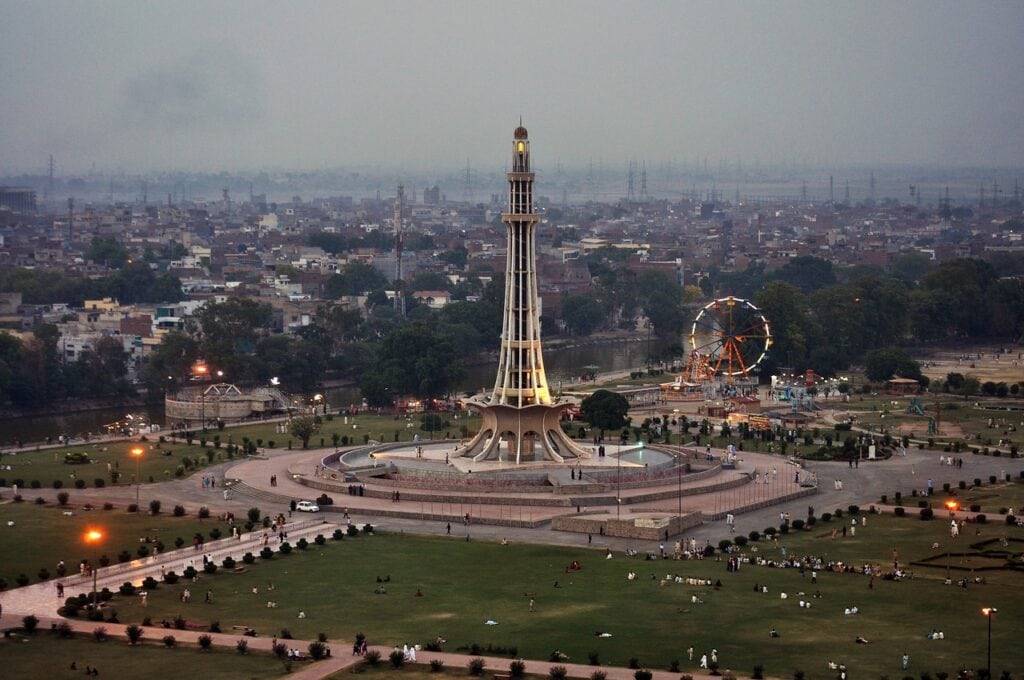
| PM2.5 pollution level: | 108 µg/m3 |
| City population: | 13.5 million people |
| Area/Size: | 684 mi² |
The second-largest city in Pakistan, Lahore, is one of the most progressive places in South Asia, with an estimated GDP/PPP of 84 billion US dollars. Home to 13.5 million people, it’s a liberal, culturally rich, and well-developed hub for the entire Punjab region. The city dates back to the first century A.D. with a diverse historical background. Sadly, it’s also the most polluted city in the world.
The PM2.5 concentration is 108µg/m3 (vs. 86.5 in 2021). That’s almost ten times higher than the WHO-set standard for air quality and cuts 5+ years off the life expectancy of the locals. Lahore is overwhelmed by dust from construction sites, industrial emissions (mainly due to brick kiln production), power plants, and the burning of waste/crops in every corner.
2. Delhi, India
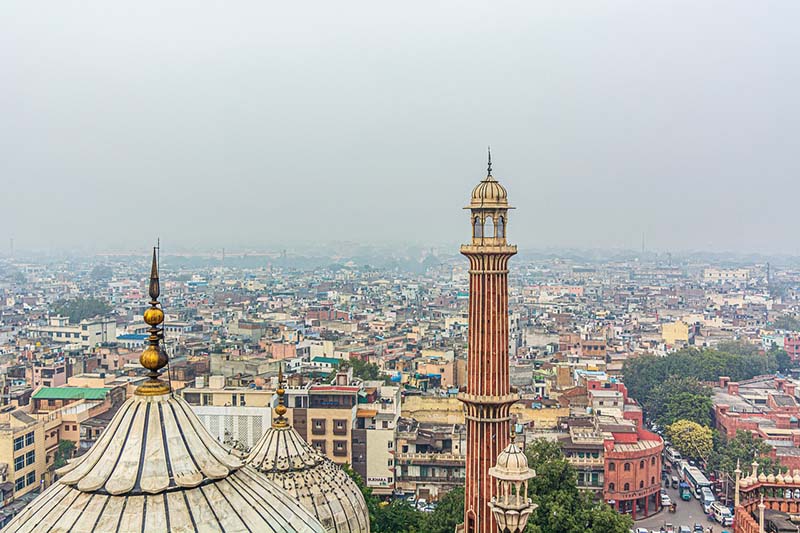
| PM2.5 pollution level: | 91 µg/m3 |
| City population: | 32.06 million people |
| Area/Size: | 573 mi² |
India, the 6th-biggest economy in the world, has been struggling with polluted air for many decades now. And even though the government did manage to reduce household pollution levels, they still can’t seem to curb the death toll due to PM exposure. And, as of 2022, Delhi is the worst place to be in India in terms of air quality.
With a total population of 32 million, this is the second-largest metropolitan area after Tokyo, Japan. Just like Lahore, India’s capital territory is taken over by a huge number of factories, high-emission vehicles, and a lack of proper regulations. As a result, Delhi’s PM2.5 level is 91µg/m3. Last year, the situation was even worse (96.4).
3. Dhaka, Bangladesh
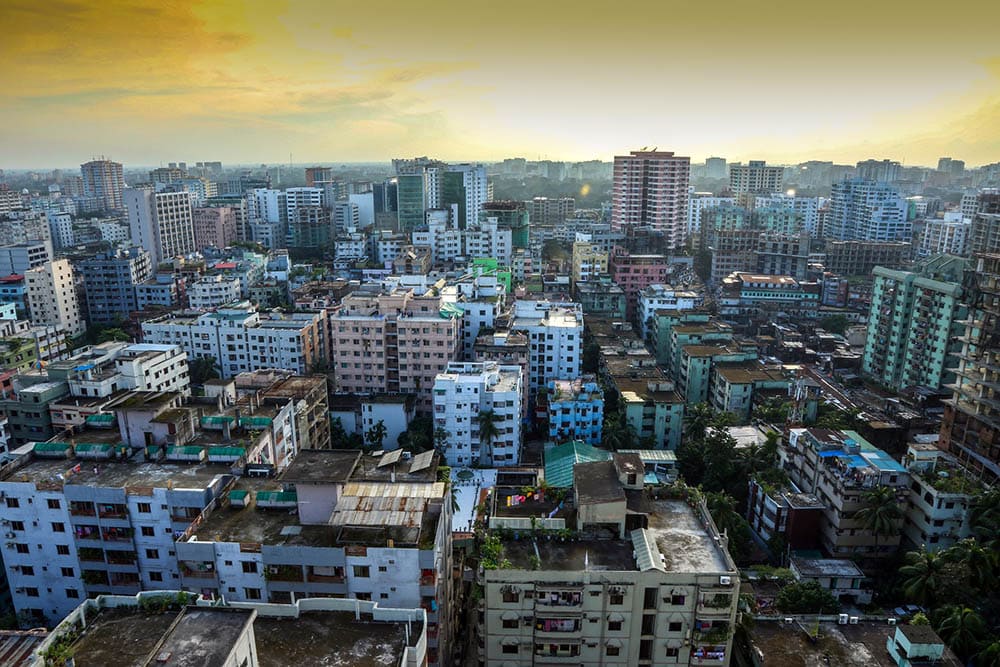
| PM2.5 pollution level: | 85 µg/m3 |
| City population: | 22.4 million people |
| Area/Size: | 118.3 mi² |
The air quality in Bangladesh, India’s historical neighbor, is a huge problem both for regular citizens and the government. Right now, it’s officially the most polluted country in South Asia and the entire world. And Dhaka, the capital, is leading the charge. In 2021, the pollution levels were still manageable (78.1µg/m3). However, in 2022, they spiked to 85.
Much like Delhi, Dhaka, a city with 22.4 million people, is having difficulty breathing because of the abnormal levels of vehicle fumes, construction dust, and outdated factories with little to no regard for air quality. Dhaka is the economic center of Bangladesh, which means the situation isn’t going to change overnight.
4. Ghaziabad, India
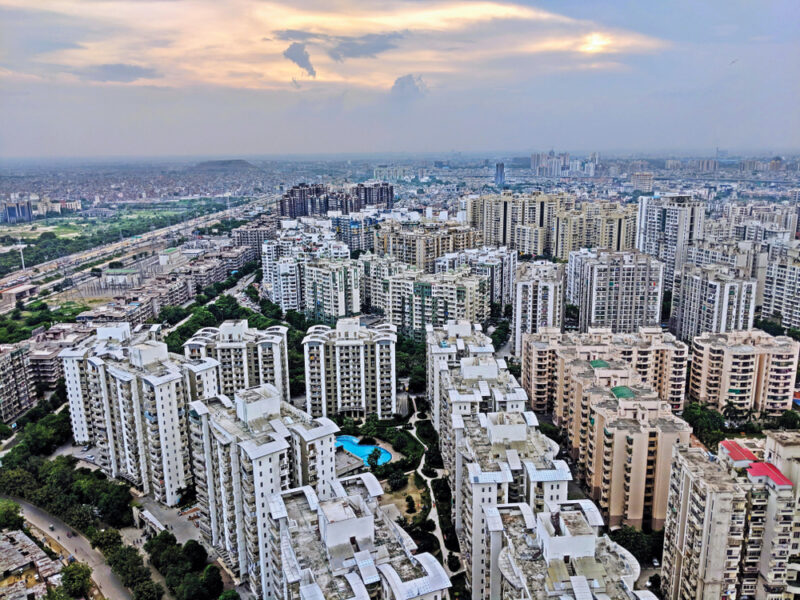
| PM2.5 pollution level: | 85 µg/m3 |
| City population: | 1.64 million people |
| Area/Size: | 81 mi² |
Moving on from heavily populated capitals, we have Ghaziabad, another place in India stained by contaminated air. The pollution concentration is almost identical to Dhaka—85µg/m3 (used to be 102 in 2021)—but this is a much smaller city. Back in 1857, Ghaziabad was one of the key centers for the Indian Independence movement against the British.
These days, it’s a bustling, colorful, and diverse home to 1.64 million people. Unfortunately, it’s also highly “hostile” to people with asthma or heart problems because of the PM2.5 levels. Even if you don’t have any conditions, the air in Ghaziabad will be very hard to breathe in, especially if you’re not used to pollution.
5. Muzaffarnagar, India
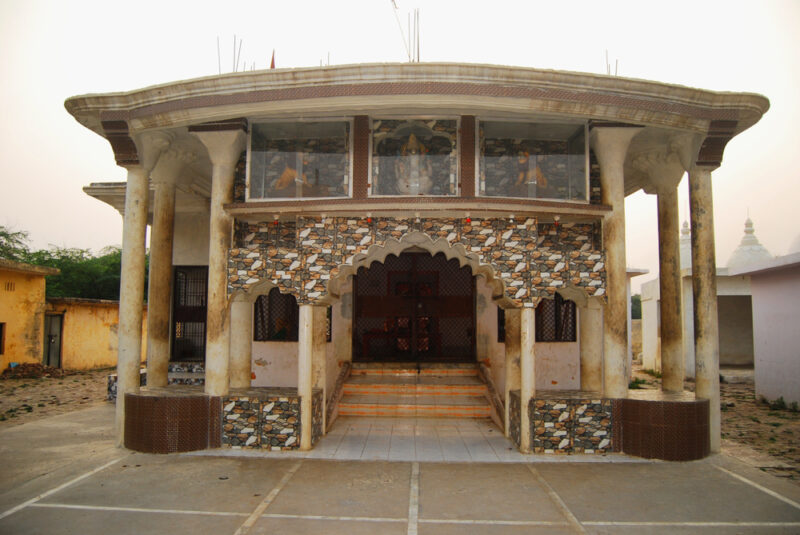
| PM2.5 pollution level: | 84 µg/m3 |
| City population: | 767K people |
| Area/Size: | 79 mi² |
Steel, paper, and sugar: that’s what Muzaffarnagar specializes in. Thanks to the national railway network of India, this city is quick to deliver goods across the country and beyond. Previously known as Sarwat, the city is an industrial and commercial center for most of India’s Western districts.
Now, while the citizens of the “Sugar Bowl of India” are somewhat used to the low-quality air, it’s still unhealthy. More importantly, the local authorities can’t really do much. The daily temperatures in Muzaffarnagar are almost always extremely high, yet the polluted air (84µg/m3, a 15% decline vs. 73µg/m3 in 2021) lingers.
6. Peshawar, Pakistan
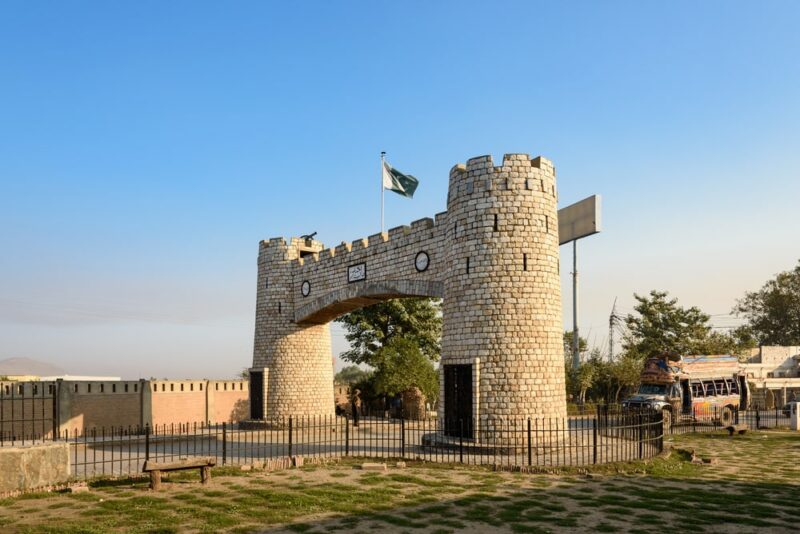
| PM2.5 pollution level: | 84 µg/m3 |
| City population: | 2.3 million people |
| Area/Size: | 83 mi² |
Going back to Pakistan, we have Peshawar, a culturally and economically advanced city. The local food and historical relics are the biggest magnets for tourists, despite the alarmingly high rates of political repression and terror attacks. Peshawar is more than 2.5K years old (the first mentions of the city date back to 539 BC).
Violence isn’t the only (or the biggest) issue there, though. Like most of Pakistan, Peshawar is struggling with bad air quality. Rickshaws, trucks, bikes, and cars are to blame here, as most of them use poor-quality diesel fuel. On the bright side, the situation has slightly improved over the year, dropping from 89.6µg/m3 to 84.
7. Aguascalientes, Mexico

| PM2.5 pollution level: | 80 µg/m3 |
| City population: | 1.1 million people |
| Area/Size: | 148.6 mi² |
Did you know that there are hundreds of US-owned facilities in Mexico? The manufacturing boom began in the late 60s and is still raging. Low labor costs, a capable workforce, and low transportation fees turn our southern neighbor into a perfect “playground” for a long list of American companies.
But that makes the air dangerously polluted. This is especially true for Aguascalientes, an ex-colonial town and a strategic rail hub. The 1.1 million people living in this picturesque city are exposed to life-threatening levels of nitrogen dioxide and particulate matter (80µg/m3).
8. Hapur, India
| PM2.5 pollution level: | 76 µg/m3 |
| City population: | 13.2 million people |
| Area/Size: | 254.8 mi² |
Hapur is a big, densely-populated area that specializes in the manufacturing of stainless steel tubes and pipes. Wood and paper cone production is a big part of the economy as well. On the downside, all that heavy-duty manufacturing is contaminating the air, pushing pollution levels way beyond safety standards.
While 75µg/m3 is not as bad as 108µg/m3 in Lahore, it does affect the daily lives of the locals. Now, Hapur is located 60 km/37 miles from New Delhi, the second most-polluted city in the world. And, sadly, some of the toxic fumes from the capital of India reach Hapur, making matters worse.
9. Lucknow, India
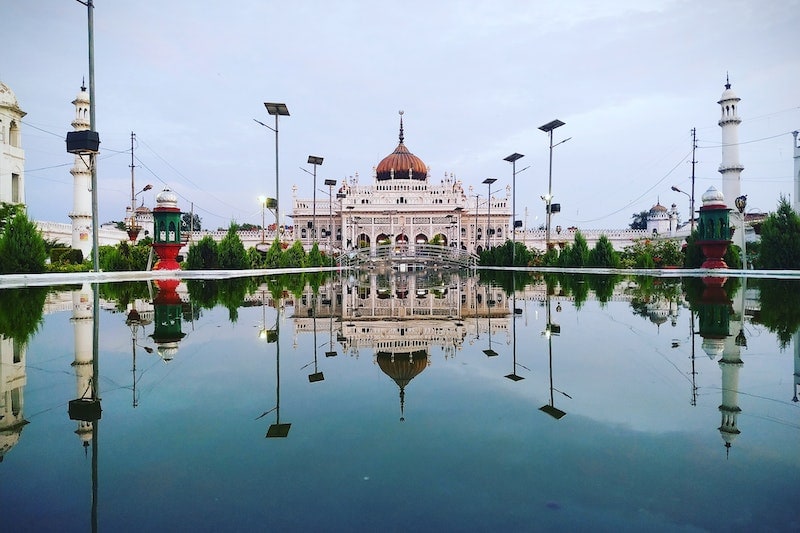
| PM2.5 pollution level: | 64 µg/m3 |
| City population: | 3.8 million |
| Area/Size: | 243.6 mi² |
Lucknow is a fast-paced city with an above-average population (3.8 million) and large area (243 square miles). As the capital of Uttar Pradesh state, Lucknow is the heart and soul of the culture and history of North India, known for its captivating dances, marvelous gardens, and embroidery. Sadly, the country is suffering from air contamination. However, if we compare 2022 to 2021, we’ll see a big improvement (64 µg/m3 vs. 86).
10. Patna, India

| PM2.5 pollution level: | 60 µg/m3 |
| City population: | 2.5 million people |
| Area/Size: | 96.3 mi² |
Tourists visit this place for the Patna Museum where Buddha’s ashes are rumored to be held. The Bihar Museum is also quite popular thanks to its unique collection of coins, weapons, and sculptures. Patna is largely recognized as the “birthplace” of Dhamar, Dadra, and other Indian music genres.
But just like every other city on the list, it is heavily polluted. Back in November 2019, the PM2.5 levels reached the 428 µg/m3 mark, setting an all-time record for the Bihar region. But in 2021, the PM2.5 concentration was at 78.2. Right now, it’s even lower (60µg/m3).
11. Dammam, Saudi Arabia
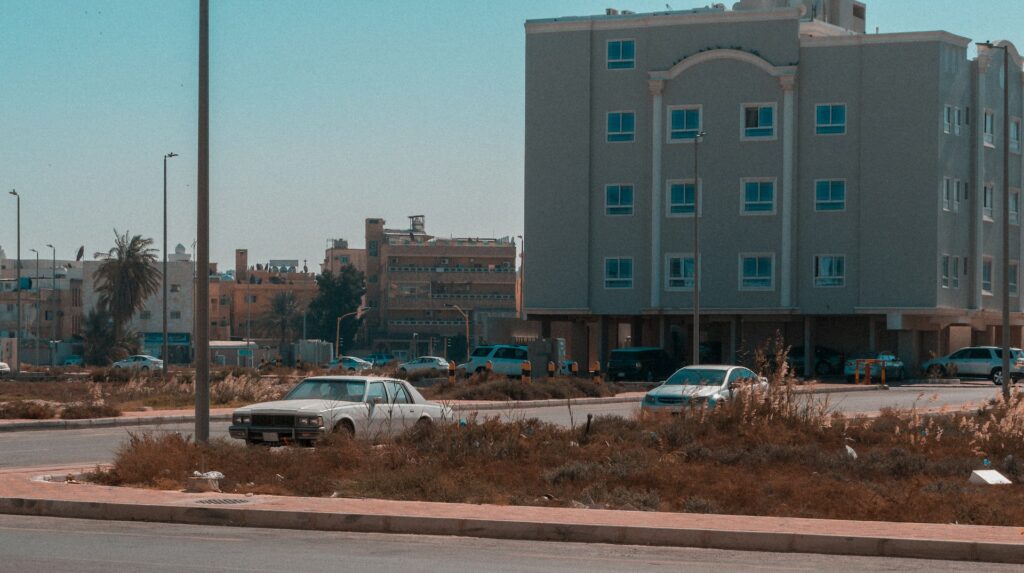
| PM2.5 pollution level: | 53 µg/m3 |
| City population: | 1.3 million people |
| Area/Size: | 308.9 mi² |
While the air quality in the Middle East is far from pure, most big cities are relatively safe. So, what about Dammam? This large, highly-populated city serves as an administrative hub for the country’s oil sector. It’s also famous for its many parks, lakes, malls, museums, and relics.
You probably won’t be able to enjoy all that the city has to offer to the fullest, though, as the air quality in Dammam leaves a lot to be desired. The government has been fighting this with new incentives; to some extent, they have worked, but the problem is still there.
12. Ulan Bator, Mongolia
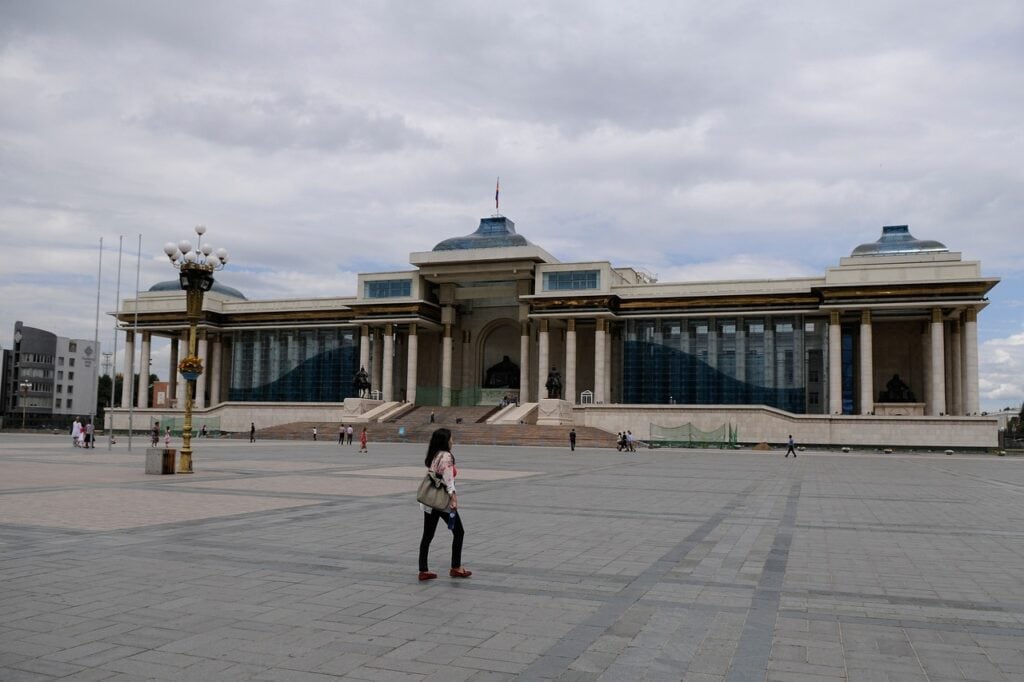
| PM2.5 pollution level: | 52 µg/m3 |
| City population: | 1.6 million |
| Area/Size: | 1.8 mi² |
Currently known as Ulaanbaatar, Ulan Bator is the capital of Mongolia, one of the most ancient civilizations in all of Asia. The big question is—can you walk around freely in Ulan Bator? The answer is yes, but only if you put on a mask and stick to hotels. The PM2.5 levels in the city are slightly above 50µg/m3.
That means prolonged exposure might result in severe health issues or even death. The locals rely heavily on coal to stay warm and cook food. Add a rapidly-growing population and a lack of monitoring stations and you’ll see why Mongolia’s capital isn’t exactly perfect when it comes to air quality.
Polluted Air: How Big of a Problem Is It?
According to a recent study by the WHO, 99% of people in 2022 are still breathing polluted air every single day. In scientific terms, “polluted” means contamination levels that go beyond the World Health Organization’s standards for air quality (10µg/m3). Today, 6K+ cities in 117 countries across the planet have the necessary equipment to monitor air quality. That’s a 600% increase in monitoring capacity over 2011.
But, that doesn’t yet help citizens of low-income, third-world countries that are exposed to dangerously high levels of nitrogen dioxide (NO2) and particulate matter (PM2.5). So, why is this happening, exactly? Why are the air pollution levels so high? Fossil fuel combustion is the #1 cause of contaminated air, mainly in power plants, industrial-scale facilities, construction sites, and cars on the road.
What Are the Side Effects? Are They Severe?
Even if you’re exposed to low levels of pollutants, that can still have dire consequences for your health. We are highly vulnerable to both NO2 and PM2.5. These chemicals easily find their way not only into our lungs but also into the bloodstream, reaching every single organ in the body. Respiratory, cardiovascular, and cerebrovascular diseases (asthma, strokes, and heart/blood vessel disorder) are the most common side effects.
If your eyes hurt and you find yourself coughing and having difficulty breathing, most likely, you’re exposed to either of these gasses. Older people with weaker immune systems and heart/respiratory conditions and babies are in the highest risk group. And the longer they’re exposed to these compounds, the more severe the symptoms will be.
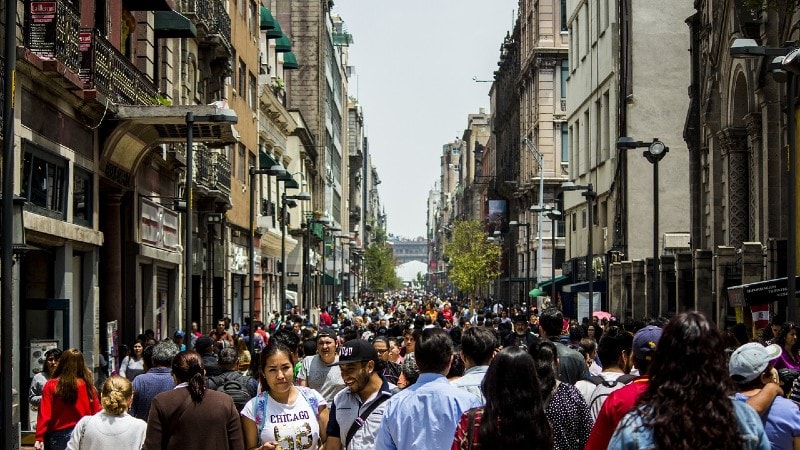
Why Are So Many Cities in India Polluted?
India is one of the fastest-growing countries out there, both in terms of population and economy. However, while the number of facilities is increasing at an exponential rate, most cities in India largely neglect the air quality regulations set by the WHO. According to National Geographic, air pollution kills 2.5 million people each year. And unfortunately, India accounts for 1.67 million of those deaths.
That makes up almost 18% of the total number of lives lost in the country. PM is the #1 killer in Hindustan. In 2022, it killed 115% more people than in 1990. Air pollution hurts India’s economy as well, cutting it $36.8 billion short (1.3% of the country’s GDP). Coal-fired factories, thermal power plants, construction dust, and burning waste all contribute to India’s life-threatening air quality levels.
What’s the Most Polluted Country in the World?
In 2021, Bangladesh was the most polluted country on the planet. Although the contamination levels over there have been in a steady decline since 2018, they’re still alarmingly high (76.9µg/m³). The situation in Chad was almost as bad (75.9µg/m³), while Pakistan came in at #3 with 66.8µg/m³. India was rated as the fifth-worst country; China was only at the #22 spot.
A quick note: while the US wasn’t even on the list, there are various government resources like AirNow that help track air quality in real-time. All you have to do is enter your zip code, and you’ll get a detailed forecast. On this website, you can also check out PM10, NO2, CO, and Ozone levels.
Conclusion
Air pollution is not something that you can see or hear, but it does have a dangerous effect on our health. The side effects can be severe, especially for people with weak immune systems. Countries like India, Pakistan, and Bangladesh are some of the worst places in this regard. And then we’ve got Lahore, Delhi, and Dhaka as the most polluted cities on Earth.
While the situation in different cities does change each year, on a global scale, this is a very serious and lingering issue. Hopefully, with countries like the US, China, and many European nations committing to closing down air-poisoning facilities and building more wind turbines and solar panels, we will be able to solve this problem once and for all!
Featured Image Credit: alyoshine, Pixabay
Contents


